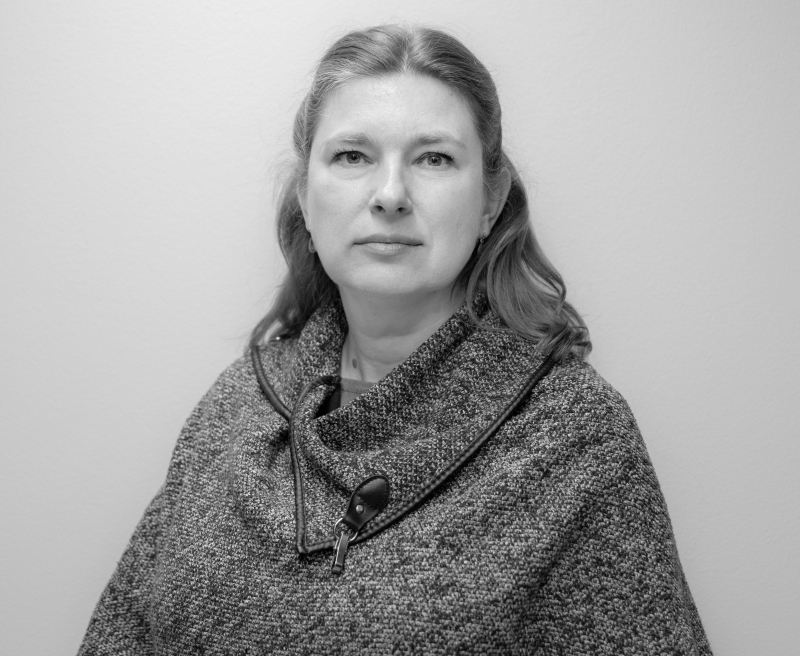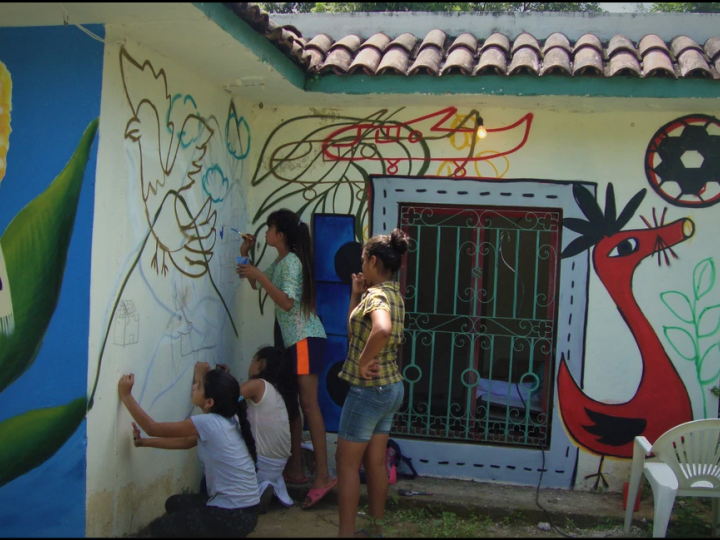This struggle and this diversity is not a coincidence or the stroke of luck. It is the consequence and sum of processes of learning, reflection, debate, exchange and above all of demands and the accumulation of violence that affects us and others near and far. This "awakening" of feminism, as some call it, has made visible what women have thought, created, discussed and done together or separately for decades. Today it is clear that the collective power of women is transforming power relations and is generating a process of transformation.
My body, my territory

The body as a territory is a common concept among colleagues who have studied and worked on processes of recognition of women's human rights, and increasingly socialized in spaces for the defense of human rights. My body, my territory is a recognition of possession, of belonging, of demands and a declaration against the multiple forms of violence that our bodies have experienced in different contexts. Likewise, it becomes a political declaration that leads to new forms of self-care and relationship with one's own body. Currently, healing and care is promoted as a political practice to make the processes of defending ourselves sustainable.
The body as a territory, as the first territory of defense, becomes relevant in a community conception, where the defense of the land and the territory is an engine of life and collective action. In these contexts, men and women resist the privatization of land, the destruction of natural resources and fight for the dignity of life. It must be recognized that within indigenous and non-indigenous rural communities, all kinds of violence against women and girls have been produced and reproduced, limiting their human rights, including the right to participate in decision-making. Women's bodies, as the first territory of defense, mark for them the possibility of deciding, first about their bodies, and then about everything else that surrounds them; body - territory - community.
"The body as a territory, as the first territory of defense, becomes relevant in the community conception, where the defense of land and territory is an engine of life and collective action".
The violence learned must be unlearned and healed through processes that incorporate women’s interests and needs within community agendas, and their rights to land. Unlearning can in turn allow us to imagine other ways of living, other ways of relating and creating strategies that include the particular needs of girls and women.
Reflections of the organizations
At a previous meeting with civil society organizations organized by the Norwegian Human Rights Fund (NHRF) in Mexico, a group of human rights defenders shared their experiences of work with defending territory. One of the reflections shared by Red Solidaria de Derechos Humanos focused on the defense of territory from the perspective of community feminism that identifies the role of women defenders healers in generating community social transformations. Healing the violence experienced in and from the body (physical, emotional, sexual) to demand an end to dispossession and extractivism in the community are part of these processes of transformation. Similarly, according to Tequio Jurídico, an organization that accompanies the struggle of indigenous communities in Oaxaca, women community defenders have been invisible actors in these transformations, and little or no recognition has been given to their contributions to the advancement of women's human rights.
According to the experiences of the organizations involved in community processes, not reproducing the oppressions experienced becomes the premise for social transformation. The driving force of these processes to later transform reality has been key in the advancement of women's human rights, as well as in the demand for collective rights of indigenous and non-indigenous communities in the defense of their territory. Thus, the right of women to participate in decision making on land and territory involves raising awareness and exercising the right to decide upon one' s own body, not repeating the oppressions exercised and experienced, and transforming power relations in the community. It is a process that requires individual and collective actions, as well as social changes, including changes in legislation and community practices.
"The right to decide about one's own body is a declaration of peace over a territory that has been violated in many ways, for a long time, and which lives in constant resistance."
The right to decide
The right to decide about one's own body is a declaration of peace over a territory that has been violated in many ways, for a long time, and which lives in constant resistance. It is a demand for rights that have been denied and a declaration of an end to violence. Body territory, captured by companies to make products, body territory captured by the police or military in demonstrations and armed conflicts, body territory captured by organized crime, body territory captured in homes, body territory as booty in the transportation, the school, the street. Body territory as a concept that liberates and invites to love and defend what is ours.
Main photo: Red Solidaria de Derechos Humanos.
The NHRF invites different actors within the human rights field to contribute on this blog. The opinions expressed here are those of the authors.

